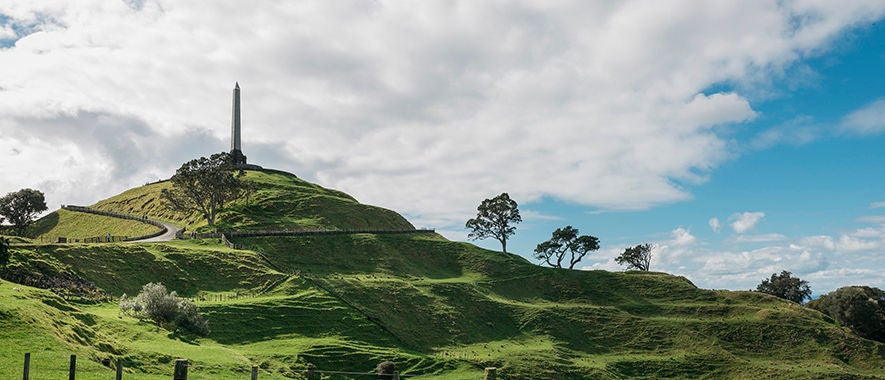Auckland is rich in natural ecosystems, landscapes, seascapes and natural beauty.
It is home to a number of diverse and unique natural environments that are significant, both in New Zealand and internationally.
Auckland is rich in natural ecosystems, landscapes, seascapes and natural beauty.
It is home to a number of diverse and unique natural environments that are significant, both in New Zealand and internationally.

Maungakiekie / One Tree Hill. Photograph credit - Tūpuna Maunga Authority
Our marine environments provide unique habitats for species and places for Aucklanders to enjoy.
Our native forest-covered ranges, the Waitākere and Hunua Ranges, are spectacular natural landscapes, habitats and hotspots of native biodiversity.
They are also the source of our drinking water.
Our 28 regional parks represent significant natural areas.
They offer:
Taking care of our significant natural environments and cultural heritage protects biodiversity, landscapes and lifestyle activities. It also mitigates climate change.
Taking care of our sites of significance and cultural landscapes protects our unique identity and the rich histories and stories embedded in the land.
Sites and landscapes of cultural significance include:
Many of these environments are threatened by how they are currently treated and, unless we actively protect them, are likely to decline further as Auckland's population grows.
Unique cultural sites, landscapes and sites of significance to Māori must be protected from the pressures of growth as well as other emerging threats and risks.
The map below was originally published in June 2018. To find out more about the data represented above, view the historic heritage map data.
Corridors such as the North-West Wildlink create safe, connected and healthy habitats for native wildlife.
They must be recognised for their important role in providing interlinked spaces across Auckland where wildlife can breed safely and move between conservation hotspots. More links like this can be created.
Auckland's network of public spaces and parks also support conservation of habitats and species, while providing recreational and tourism opportunities.
As Auckland grows, additional pressure will be put on these spaces, and additional spaces will be needed.
Some of Auckland's cultural heritage sites, cultural landscapes and sites of significance to Māori are also under pressure from development, either directly or from incompatible uses or activities close by.
The Tūpuna Maunga, in particular, are vulnerable to new development compromising people's enjoyment of them, and their long-term protection.
There needs to be greater awareness of, and more investment made into ensuring the long-term protection and integrity of our cultural heritage sites, cultural landscapes and sites of significance to Māori.
We must also take care to safeguard against loss of habitat and sites of cultural heritage in areas that are currently flourishing and protected.